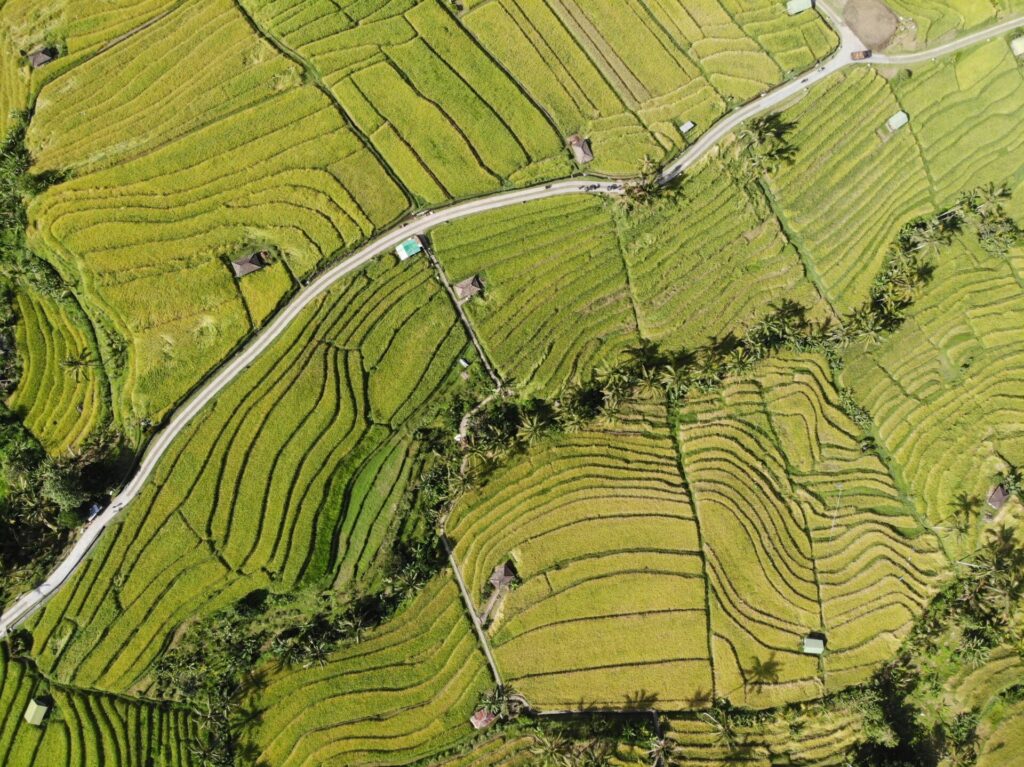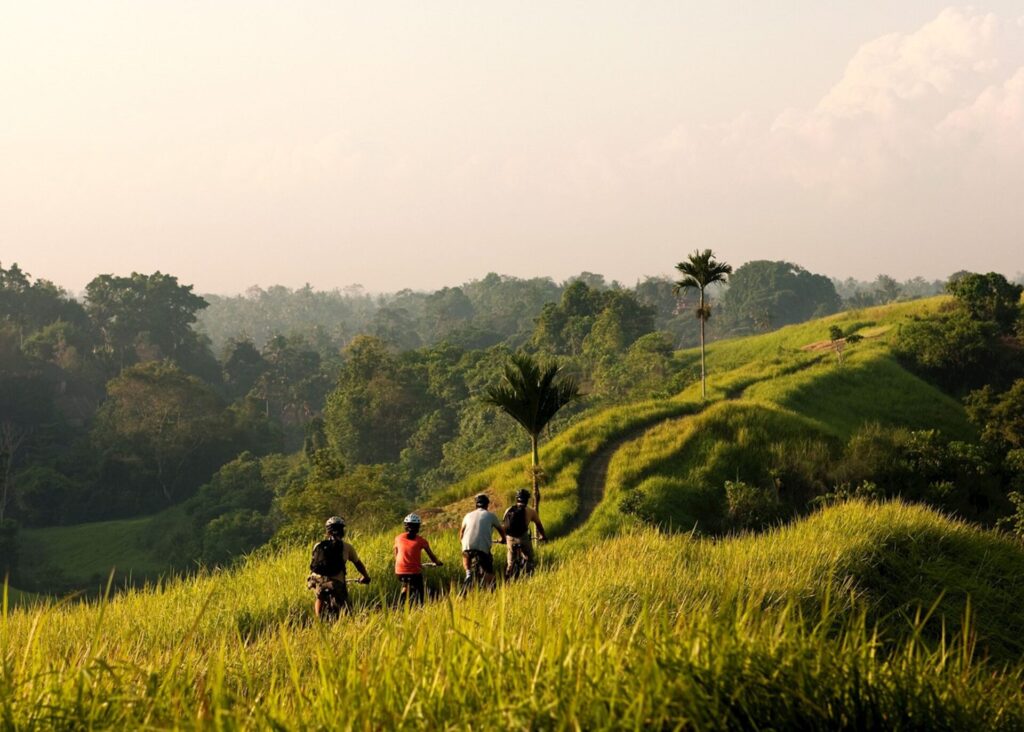Jatiluwih Rice Terraces: Bali’s UNESCO Heritage You Must See in 2025
Published on , last updated on
Written by Emily Suryadi
Nestled in Tabanan Regency, Central Bali, the Jatiluwih Rice Terraces stretch across more than 600 hectares of lush greenery, unfolding like a never-ending ocean of rice paddies. What makes Jatiluwih truly special isn’t just its vast scale, but the Subak irrigation system that sustains it — a traditional Balinese method of water management rooted in community cooperation and spiritual philosophy, earning the site its UNESCO World Heritage status.
In 2012, Jatiluwih was inscribed as part of the “Cultural Landscape of Bali Province: the Subak System as a Manifestation of the Tri Hita Karana Philosophy.” This honor goes far beyond scenic beauty; it recognizes the way Balinese people have harmoniously managed land and water for centuries, blending agriculture, faith, and social life into one inseparable whole.
Walking through Jatiluwih feels like stepping into a living painting, where every curve of the terraces tells a story of balance between humans, nature, and the divine. Farmers still tend the fields as their ancestors once did, guided by rituals at water temples and the shared wisdom of the Subak community.
This guide will be breaking down all you need to know about this unique destination.

Why Is Jatiluwih a UNESCO World Heritage Site?
In 2012, Jatiluwih Rice Terraces were inscribed as a UNESCO World Heritage Site under the "Cultural Landscape of Bali Province" designation. This recognition highlights three critical aspects that make these terraces globally significant:
1. The Subak Water Management System
The Subak system represents a democratic and sustainable approach to water distribution that has functioned effectively for over a millennium. Local farmer cooperatives manage water flow from mountain springs through an intricate network of canals, ensuring fair distribution and optimal crop yields.
2. Integration of Agriculture, Religion, and Community
Unlike purely agricultural sites, Jatiluwih demonstrates the deep spiritual connection between farming and Balinese Hinduism. Water temples (Pura Ulun Danu) are strategically placed throughout the terraces, where farmers perform ceremonies to ensure successful harvests and maintain spiritual harmony with nature.
3. Environmental Sustainability
The traditional farming methods practiced at Jatiluwih have maintained biodiversity and soil fertility for centuries without chemical fertilizers or pesticides. This sustainable approach serves as a model for modern agricultural practices worldwide.
Key Features of Jatiluwih:
- Size: Over 600 hectares of terraced rice fields
- Age: Approximately 500 years old
- Location: Penebel District, Tabanan Regency
- Elevation: 700 meters above sea level
- Climate: Cool mountain temperatures year-round
How to Visit Jatiluwih in 2025
Planning your visit to Jatiluwih requires understanding the practicalities, seasonal variations, and available options for exploration.
Entrance Fees and Opening Hours
- Entrance Fee: IDR 40,000 (approximately $2.50 USD) for adults
- Children: IDR 30,000 (approximately $2 USD)
- Opening Hours: 8:00 AM - 6:00 PM daily
- Parking: IDR 5,000 for motorcycles, IDR 10,000 for cars
Best Time to Visit
Weather Considerations: The dry season (April to October) offers the clearest views and most comfortable hiking conditions. However, each season provides unique photographic opportunities.
Rice Growth Cycle:
- March-May: Bright green young rice plants
- June-August: Mature golden rice ready for harvest
- September-November: Flooded fields reflecting the sky
- December-February: Planting season with terraced water mirrors
Optimal Visit Times:
- Early Morning (7:00-9:00 AM): Best lighting and fewer crowds
- Late Afternoon (4:00-6:00 PM): Golden hour photography opportunities
Transportation Options
From Ubud: 1.5-hour drive through scenic mountain roads. From Canggu/Seminyak: 1-2 hours depending on traffic. From Sanur/Denpasar: 1.5-2 hours
Guided Tours vs DIY Exploration:
- Guided Tours: Include transportation, local insights, and often combine with other attractions
- DIY Exploration: Offers flexibility but requires reliable transportation and basic Bahasa Indonesia

Things to Do at Jatiluwih
The rice terraces offer diverse activities beyond sightseeing, making it possible to spend a full day immersed in Balinese rural culture.
1. Scenic Walks and Trekking Trails
Multiple walking paths wind through the terraces, ranging from easy 30-minute strolls to challenging 3-hour treks. The main trail follows the irrigation channels, providing insights into the Subak system while offering spectacular valley views.
Popular Trails:
- Heritage Trail: 2km easy walk along main terraces (45 minutes)
- Valley Circuit: 4km moderate hike through multiple terrace levels (2 hours)
- Mountain Ridge Trail: 6km challenging trek with panoramic views (3-4 hours)
2. Visit Water Temples
Several sacred water temples are integrated into the terrace system, each playing a crucial role in agricultural ceremonies:
- Pura Luhur Petali: The main temple overseeing water distribution
- Pura Masceti: Temple for purification ceremonies
- Small shrine temples: Scattered throughout the terraces for daily offerings
3. Traditional Balinese Dining
Local warungs (family-owned restaurants) serve authentic Balinese cuisine with stunning terrace views. Most establishments offer:
- Nasi Campur: Traditional rice dishes
- Gado-Gado: Mixed vegetables with peanut sauce
- Fresh tropical fruits: Grown locally in the region
- Balinese coffee: Sourced from nearby plantations
Final Thoughts
Planning your Bali adventure? Jatiluwih Rice Terraces offer an authentic glimpse into Indonesia's agricultural heritage while providing some of the island's most spectacular landscapes. Whether you're a photography enthusiast, culture seeker, or nature lover, these UNESCO-protected terraces deliver an unforgettable experience away from Bali's crowded tourist centers.
Categories: Plan Your Trip, About Bali
